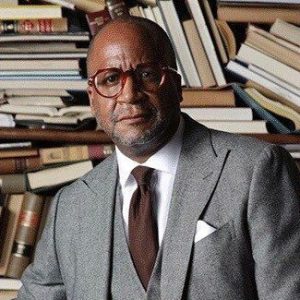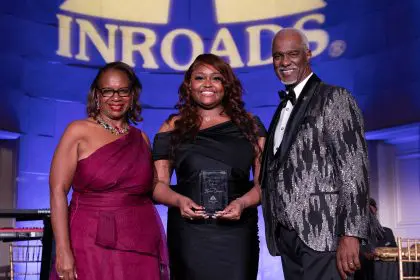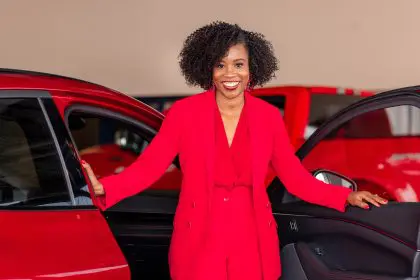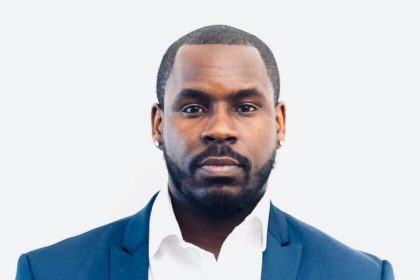Gregory S. Moore, Esq.
Commissioner
Southern InterCollegiate Athletic Conference
Since 2009, Gregory Moore has served as commissioner of the Southern Intercollegiate Athletic Conference, a competitive athletic conference in Atlanta. The SIAC is currently composed of 13 Division II historically black colleges and universities from five states, including Alabama, Georgia, Kentucky, South Carolina and Tennessee. As commissioner, Moore oversees championship tournaments in seven men’s and six women’s sports, and is committed to enhancing the college experience for student athletes.
Here he discusses the mission of the SIAC, the largest HBCU athletic conference, sponsorship and the benefits of the Koch Foundation’s $25 million gift to UNCF.
Why is the Southern Intercollegiate Athletic Conference important?
As one of the oldest NCAA athletic conferences, the SIAC is important because since our founding over one-hundred years ago, the mission of our member schools remain essentially unchanged— which is to provide opportunities to young people who otherwise would not have them. Since SIAC student-athletes pretty much across the board graduate at higher rates than their non-student-athlete counterparts, SIAC athletic programs play an important role with respect to the goals and objectives relating to retention. The SIAC is also important in terms of our collective economic impact in throughout the Southeastern United States. Last year, we retained an economist to study that particular question and it was determined that collectively, SIAC member institutions are responsible for approximately 10,000 jobs and an annual economic impact of 1.5b dollars.
How does the SIAC compare to other HBCU conferences?
I would differentiate the SIAC from our colleague HBCU athletic conferences in a variety of ways. First, with 15 member institutions, we are now the largest HBCU conference in the country. Further, out of those schools, we have the highest percentage of private UNCF institutions (ten) than any other HBCU conference by a significant margin. My sense is that base on that fact, the demographics of our students and alumni tend to skew a bit higher with respect to income. Finally, it is my view that we have the best geographic footprint — bar none. Several of our member institutions are located in some of the largest cities in the south and some of the largest target markets for African-Americans as well. For example, in addition to Clark Atlanta, Morehouse in Atlanta, Georgia, Benedict in Columbia, South Carolina, LeMoyne-Owen in Memphis, Tennessee, Miles College in Birmingham, Alabama, we have two schools – Central State in Ohio and Kentucky State in close proximity to Lexington – who enjoy virtual monopolies in those two home states as the only HBCU athletic programs. The often repeated conventional wisdom is that the relationship between location and business value propositions enjoys the closet correlation to the real estate and restaurant businesses. I would add the businesses of college and professional sports to that mix of examples as well. And as a result, in my view, we have more unrealized geographic value than any other HBCU conference.
What are the opportunities for brands to sponsor at the SIAC?
The SIAC offers tremendous opportunities for both established brands and companies seeking to gauge or secure consumer acceptance or traction for new products or services in the marketplace. I have long believed that young African-Americans have few peers with respect to their ability to cultivate and curate popular culture, both in the United States and globally. Whether you’re talking about language, fashion, music, or style, the kid wearing a cap backward in downtown Beijing or Berlin sporting Nikes more likely than not owes a cultural debt to the young African-American kids from who those trends emanated. And if you accept the premise that young African-Americans drive popular culture, then a very compelling case can be made that HBCUs, who are the central repositories of black culture, are often at the epicenter of global cultural phenomenon. Based on the foregoing, I believe that the SIAC through the Atlanta University Center (Morehouse, Clark-Atlanta, and Spelman) maintains one of the best focus groups in the world. If those kids embrace a new product, I’d be willing to bet that more often than not, the kids in middle-America will soon follow.
How have you added business innovation to SIAC?
When I became commissioner of the SIAC in 2009, we made significant bets on digital, mobile and social media platforms. After conducting a rigorous SWOT analysis of the SIAC, and in view of the fact that the SIAC has led NCAA DII in average football attendance 22 out of the previous 24 years, it was pretty obvious that strategically, the low hanging fruit so to speak was building robust digital and social media infrastructure around the roughly 350,000 SIAC fans who attend our football games every season. Those investments have yielded significant returns for us. For example, as the first college NCAA conference to build a digital platform modeled after MLB Advanced Media, all SIAC member institutions share the same advertising platform. This has allowed the SIAC aggregate our eyeballs and move from last to first in NCAA DII with respect to Facebook likes, Twitter followers, and YouTube Channel views. Moreover, last football season, we drew more fans to our digital ecosystem than every other NCAA Division I, II or III conference but the Pac-12. The impact on our bottom line has also been significant as the SIAC has doubled revenues, increased sponsorship by nearly 300% and not only eliminated all debt from our balance sheet, but it was replaced it with a reserve fund in excess of six figures.
What entrepreneurial principles have you used to keep the SIAC progressive?
It is my sense that the best way to ensure your success as entrepreneur is to figure out a way to link your overarching business objectives to a mission or purpose larger that the entrepreneur’s self-interest. In other words, how will the end user benefit from whatever product or service that is the basis of the business venture. For example, I think the ethos that Steve Jobs created at Apple was rooted in the clear objective to very simply create “insanely great” consumer products. Everything else just flowed from that. Similarly, one of the first things I did as commissioner was to recalibrate to mission and purpose of the SIAC so that every day my staff and I engage in activities that will ultimately inure to the benefit of five critically important strategic objectives of our member schools who are our end user or customers. Those five objectives relate to:
- Enhancing member school enrolment and retention;
- Enhancing member school visibility and branding opportunities;
- Increasing engagement between SIAC member schools and their alumni, students and surrounding communities;
- Identification of new revenue streams for member schools; and
- Enhance the student-athlete experiences SIAC students.
You will find that almost every strategic initiative that the SIAC has pursued over the past five years relates to one or more of these institutional objectives.
Please share three entrepreneurial principles that are most important.
- Integrity. Protecting your reputation is of utmost importance.
- Vision. If you are unable to clearly articulate a vision of where you want to go, you won’t get there.
- Creativity. I’m convinced that entrepreneurism is more art than science. This is especially so in the context of a digital revolution that continues to transform and disrupt of host of different industries.
Why is the the Koch Foundation’s $25 million gift to UNCF important to HBCUs?
The generous gift to UNCF by the Koch family is critically important on a variety of levels. First, HBCUs today serve as engines of economic development in many of the most rural and economically disconnected communities in the country. Secondly, this economic activity (which has been conservatively estimated to amount to over 11 billion dollars per year and the creation of over 50,000 jobs) is targeted in a region of the country which by almost every meaningful economic index has lagged behind other regions in the country. Finally, as a bit of history buff, I see the Koch gift as a gesture that is consistent with individuals such as Andrew Carnegie (US Steel), John D. Rockefeller (Standard Oil), George Eastman (Eastman Kodak), Julius Rosenwald (Sears) who at the turn of the century not only were some of the earliest practitioners 20th century philanthropy, but who all also consistently supported HBCUs and their leaders such as Booker T. Washington.
How does the the Koch Foundation’s gift to UNCF support future HBCU entrepreneurs?
The Koch gift will help ensure that the special and unique educational opportunities that produced Oprah Winfrey, Earl Graves, Spike Lee, Herman J. Russell and Sean Combs will be available to the entrepreneurial visionaries of the future.
Dr. Lomax has been a leader in the field of education for years. How do you see his vision and mission being supported with the Koch Foundation’s gift?
Dr. Lomax’s has dedicated his life to expanding the circumference of opportunities available to young people. In many respects, this is a uniquely American proposition. The generous gift by the Koch Family further empowers to continue his important work.
Why are entrepreneurs important to the economies of black communities?
Entrepreneurs and the both the small and large businesses they lead are the primary drivers of economic growth and job creation in America. As a consequence, entrepreneurism can only help black communities in both those areas.
Name three benefits black entrepreneurs create for their community?
- Jobs
- Economic Growth/Wealth Creation
- Strengthened Institutions (families, churches, educational)












